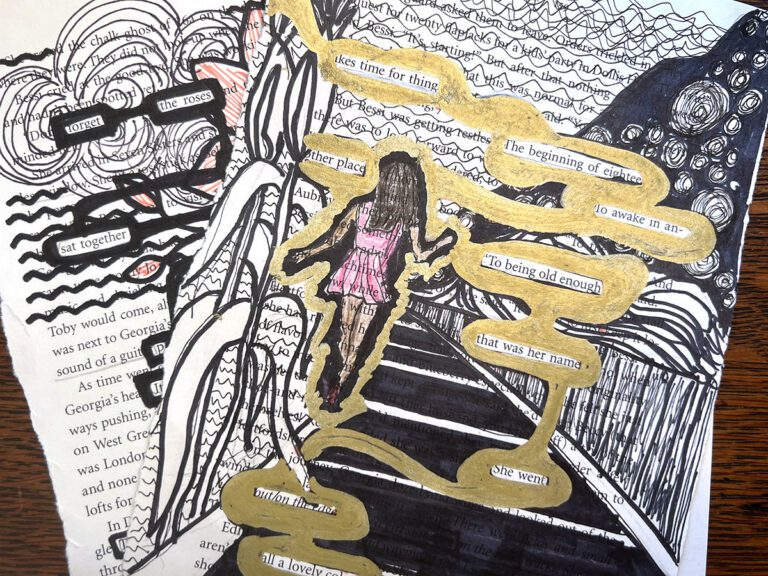Note: Be sure to review all resources and preview all artists before determining if they are appropriate to share with your students.
A great work of art can greatly impact the viewer. When this impact is challenging to put into words, poetry can be a powerful tool! Poetry is an organic way for all students to capture thoughts and feelings with a high level of success. One lesser-known form of poetry is ekphrasis, Greek for description. Ekphrasis is a literary tradition describing and commenting on a work of art and it most commonly comes in the form of poetry. The vivid detail in ekphrastic poems can help the reader “read” the artwork in a new way.
Let’s take a look at ekphrastic examples, discover how to scaffold them for the art room, and brainstorm more ways to foster visual fluency.
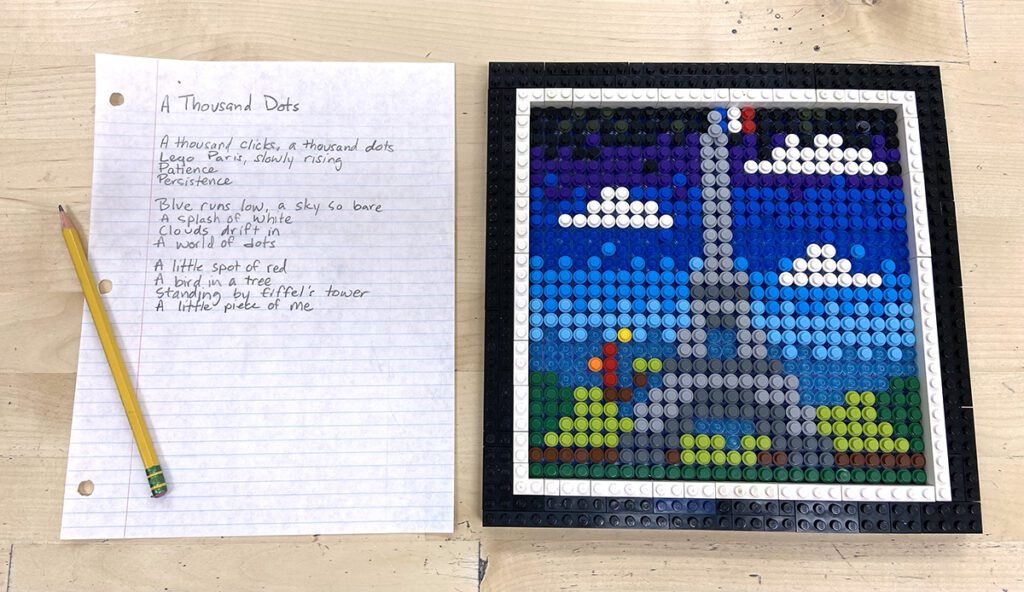
Read these six ekphrastic poems to model how to read, write, and understand art.
Note: Be sure to review all resources and preview all artists before determining if they are appropriate to share with your students.
Because ekphrasis has been around for quite a while, there are so many poems out there! If you’re looking for examples to introduce your students to ekphrasis, check out the six poems below. Keep in mind that not all poems will be appropriate for all ages. In some cases, it may be best to select just a portion of the text to analyze with students.
Here are six ekphrastic poems to start with:
- Ode to a Grecian Urn by John Keats is among the most popular and widely cited ekphrastic poem. Read the poem and discuss the speaker’s contemplation of the frozen scenes on the urn and yearning for a world beyond time.
- The Starry Night by Anne Sexton is filled with figurative language focusing more on the feel than what is literally seen in the work. Draw a parallel between Sexton’s emotionally charged language and Vincent van Gogh’s Post-Impressionist style.
- Musee des Beaux Arts by W.H. Auden uses a specific museum setting to capture a broadly shared human experience. Discuss the feelings of awe and intimidation that can come from seeing a collection of great works from history.
- Cezanne’s Ports by Allen Ginsberg is a short poem describing Paul Cezanne’s painting and what is unseen and cropped from the composition. Show how compositional choices, including what’s excluded, can be just as important as what the artist shows on the canvas.
- The Tall Figures of Giacometti by May Swenson gives voice to these sculptures. Students can grow by considering the perspective of those whom crowds look upon.
- Why I Am Not a Painter by Frank O’Hara is a glimpse into his friend’s creative process. A poet drops by Michael Goldberg’s studio and shares how seeing revisions over time can spark good conversations about the choices artists make in their work.
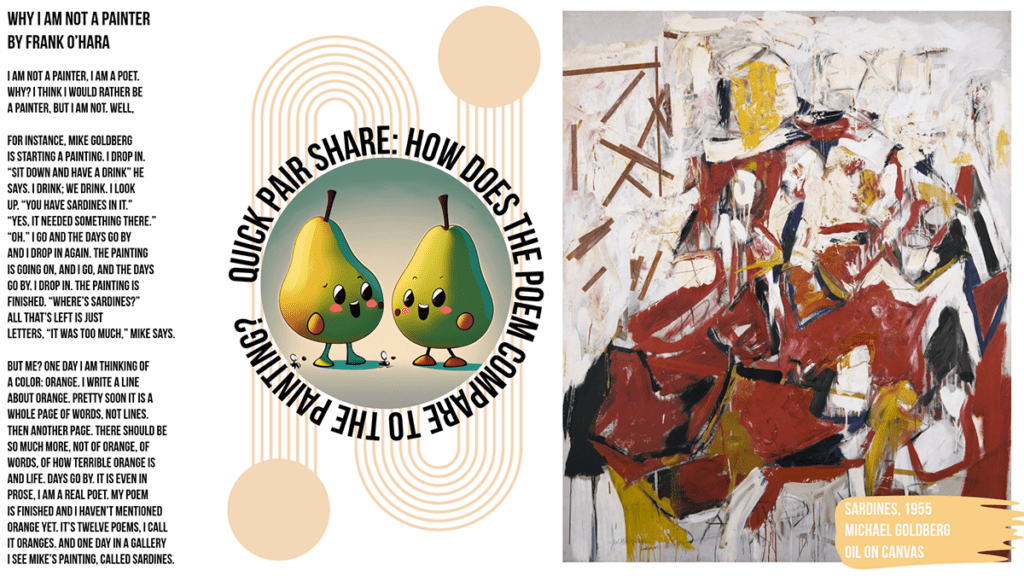
Scaffold how to use ekphrastic poems to help students sharpen their visual literacy skills.
Our youngest students start scribbling long before they can read and write. Visual literacy skills, the ability to read, write, and understand images, are key to communication and are as important in our daily lives as words. By the time students come to our art class, translating a work of visual art into words can be extremely challenging because students don’t have foundational vocabulary. Once students understand key art terms, it can help them communicate ideas when their artistic intent surpasses their skill level in drawing, painting, or sculpting. Strong visual literacy skills will strengthen comprehension in other content areas such as observing a specimen in science, interpreting a map in social studies, or analyzing a graph in algebra. It also helps prepare students for the increasingly visual world of our society.
The Visual Fluency Collection in FLEX Curriculum includes six lessons to establish the language of art and sharpen visual literacy skills. The Collection features engaging student-facing resources such as the Contemporary Elements and Principles handout and kinesthetic activities in the Dancing the Elements of Art Lesson. The Writing Clever Captions Lesson features a fun game that will prompt conversation around how words can enhance or change the meaning of an image, which is perfect for setting up ekphrastic poems!
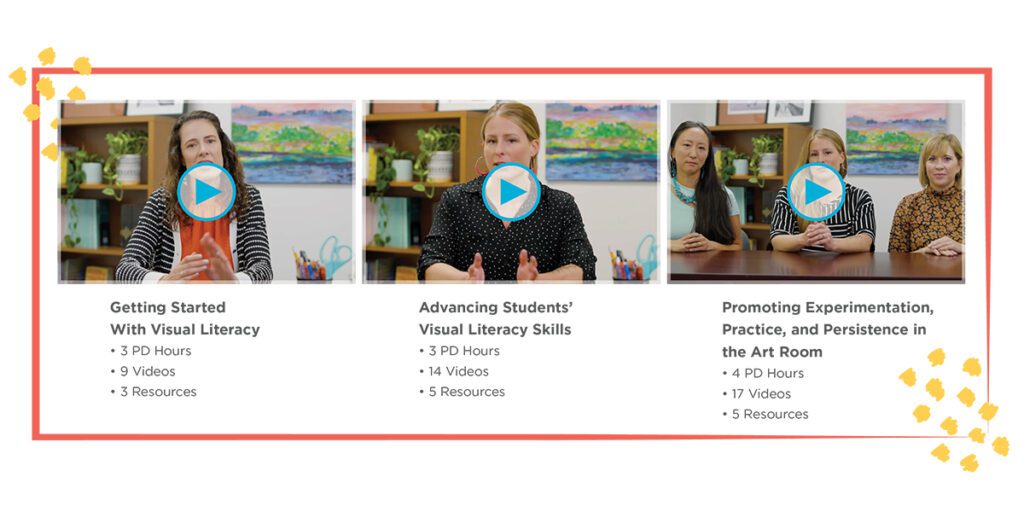
For teaching approaches, skill builders, and activities centered around visual literacy, watch the Getting Started With Visual Literacy and Advancing Students’ Visual Literacy Skills Packs in PRO Learning. These short videos will set you up for success in implementing the Visual Fluency Collection. The first Pack features beginner-level activities such as how to annotate a text or artwork using a plastic page protector and dry-erase marker. The advanced Pack explores the similarity between artists and authors and artworks and written works.
Learn how to get FLEX and PRO for your district and fill out this quick contact form.
Fill out this quick contact form!In addition to the FLEX Collection and PRO Packs highlighted above, follow these steps to gradually build skills with ekphrastic poems:
- Examine ekphrastic poems alongside the artworks they describe.
- Ask for the main idea and challenge students to find evidence to support their interpretations.
- Discuss the poet’s word choices. Identify examples that are a direct description of the artwork and examples of the poet’s imaginative connections.
- Describe the artwork using sensory language, such as the tastes and smells a piece might evoke.
- Make “thumbnail sketches” to consider what each poem could look like from different points of view. Jot down quick thoughts from the perspective of the artist, the collector, the viewer, the artwork itself, or the subject depicted in the artwork.
- Introduce a variety of poems such as rhyming, free verse, haiku, or concrete poems, and allow choice when students write their final poem.
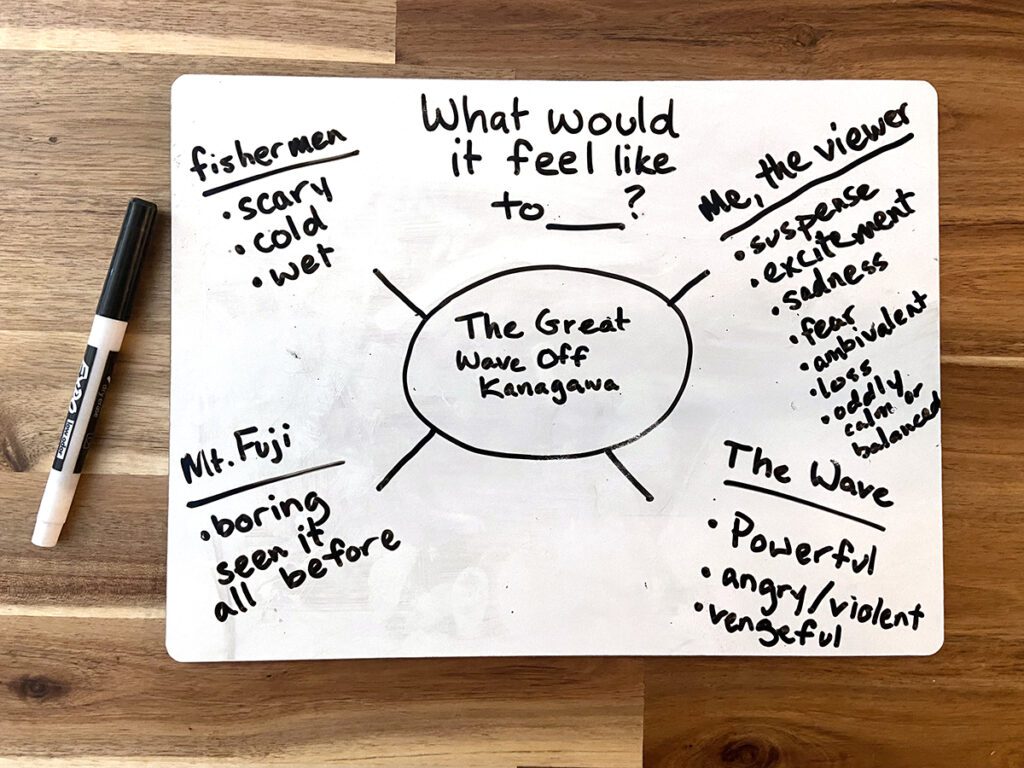
There are many ways to use ekphrastic poems in your art room to boost visual fluency.
If ekphrasis is a hit in your art room, consider other ways to bring these poems to your students throughout the year. The more your students do something, the more familiar it becomes and the better they will get at it. Plus, the more confident they get with ekphrastic poems, the more they will enjoy the process!
Keep the connections and learning going with these ideas:
- Write an ekphrastic poem for a fresh spin on artist statements.
- Craft short ekphrastic poems about a peer’s artwork to build a supportive community of learners with poetic peer feedback.
- Make an ekphrastic matching game and randomly assign students to write poems based on different artworks from the unit. Hang the completed poems on the wall and challenge students to match the art to the poems.
- Reimagine a favorite artwork from a different lens to make it more personal and alter the meaning.
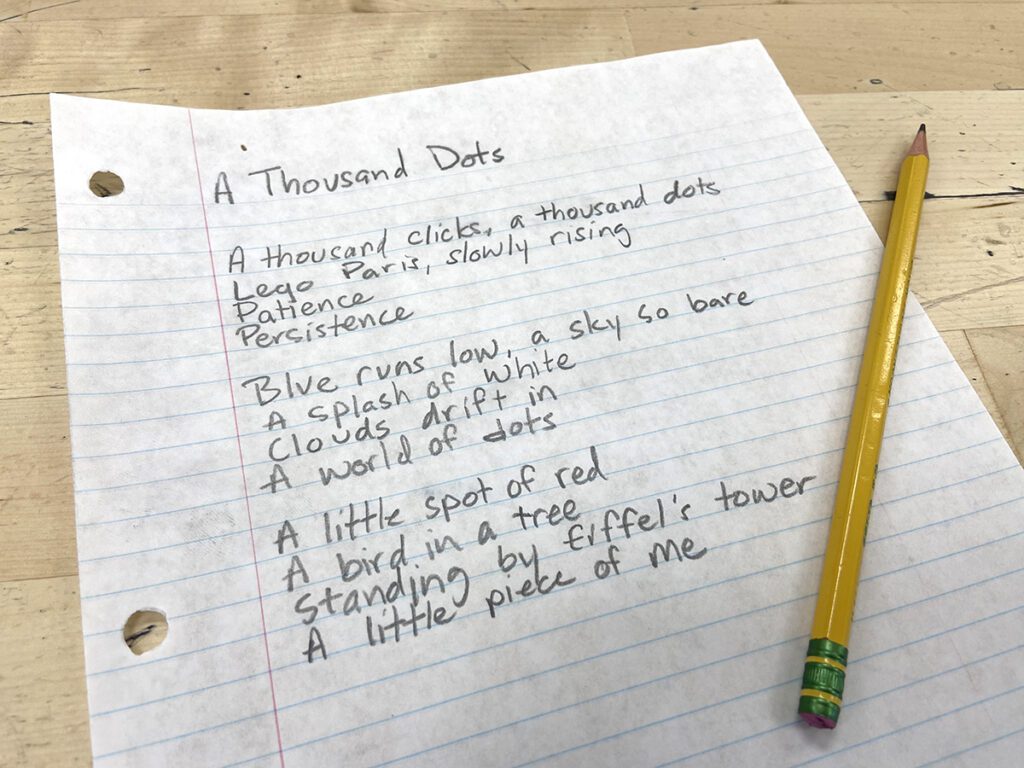
Ekphrastic poetry isn’t just about writing—it’s about fostering visual fluency and honing communication skills across the board. Explore examples of ekphrasis before students write their own to enhance connections between art and writing, discover deeper meanings, and grow art appreciation. Use the visual literacy PRO Packs to assist with lesson and instructional prep and download the FLEX Collection for student-facing step-by-step lessons that will transform how students read, write, and understand images. Use the strategies and ideas above to turn your art room into a vibrant space with colorful art and brilliant writing!
How do you use poetry in your classroom?
What activities do your students love that boost their visual fluency?
Magazine articles and podcasts are opinions of professional education contributors and do not necessarily represent the position of the Art of Education University (AOEU) or its academic offerings. Contributors use terms in the way they are most often talked about in the scope of their educational experiences.


